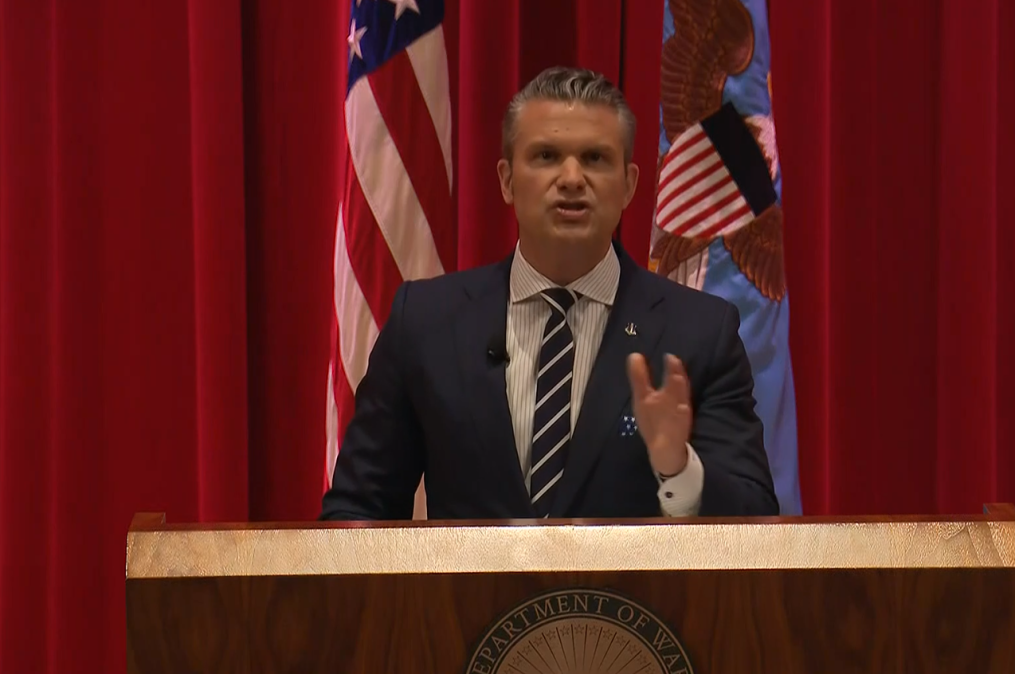Hegseth looking to sideline laggards in acquisition community, industry

Secretary of Defense Pete Hegseth’s new plan to revamp the Pentagon’s acquisition system includes provisions that would penalize or sideline acquisition officials and contractors who fall behind schedule in delivering capabilities for warfighters.
Directives issued by Hegseth on Friday call on officials to adopt “wartime urgency” in performing their duties.
During a speech at the National War College and in a memo to Pentagon leadership, he announced a slew of changes that aim, in part, to inject greater “accountability” into the defense acquisition system — which has now been redesignated the “Warfighting Acquisition System” — and speed the delivery of new capabilities and technologies to troops.
“Today’s unacceptably slow acquisition delivery and fielding times stem from three systemic challenges: (1) fragmented accountability where no single leader has the necessary authorities to lead our programs and urgently deliver results; (2) broken incentives that reward completely satisfying every requirement and specification at significant cost to on time delivery; and (3) government procurement behaviors that disincentivize industry investment, efficient production, and growth, leading to constrained industrial capacity that cannot surge or adapt quickly,” Hegseth wrote in the memo.
Initial directives for implementation call for the undersecretary of defense for acquisition and sustainment to work with the military departments to restructure existing program executive offices and create new “portfolio acquisition executives” (PAEs).
Officials will “identify how PEOs can be realigned to serve as PAEs, such as the potential consolidation of PEOs addressing related products or segments of kill chains to ensure more cohesive planning and decision-making across the Military Services,” per the guidance.
In a recent interview with DefenseScoop prior to the issuance of Hegseth’s memo, Assistant Secretary of the Army for Acquisition, Logistics and Technology Brent Ingraham said portfolio acquisition executives could function more like CEOs, and outlined what that approach might look like from the perspective of “mission kills chains” that include a variety of weapon systems, sensors and communications capabilities that troops can use to “put effects on target, downrange.”
“All those sorts of things lead to … some effect on the battlefield that you’re trying to do. Portfolio acquisition executives, like CEOs, will have to manage across that,” Ingraham said.
According to Hegseth’s directive, all major acquisition activities are to be transitioned to PAEs within two years.
Program managers will report directly to portfolio acquisition executives, who will be “the single accountable official” for outcomes of the projects under their purview.
“The PAEs will operate with expanded authorities for resourcing, requirements, and acquisition decisions within prescribed portfolios, allowing for more rapid trades and priority shifts within assigned portfolios. The portfolios the PAEs oversee will likely be related systems that integrate to deliver capabilities across programs and will be structured and bounded within a Military Department or Defense Agency,” per the guidance.
Within 180 days, Defense Department leaders are expected to create “scorecards” to measure performance, including “time from validated need to initial and full operational capability.”
Additionally, within 60 days, new personnel policies are to be crafted for portfolio heads and program managers, including “immediate removal mechanisms for poor performance and chronic schedule setbacks,” according to the directive.
“Incentivizing PMs to take risks can come in a variety of forms, but the Department will lean forward and work with Congress to identify opportunities to fund monetary incentive awards for appropriate risk taking, driving change in program offices, and leading change with speed and innovative ideas. For those who drive change successfully, the Department plans to provide incentives as compensation for leading change and removing barriers,” per the guidance.
The military services’ implementation “will require assessment of Title 10 personnel statutes, AcqDemo provisions, and direct-hire authorities and will develop any legislative proposals required to meet intent,” according to the guidance.
Officials are also directed to use “incentives” for the industrial base to “prioritize the timely delivery of capability; rewarding early delivery and penalizing delay proportionally.”
“The Department of War will only do business with industry partners that share our priority of speed and volume above all else, who are willing to surge American manufacturing at the speed of ingenuity to deliver rapidly and reliably for our warfighters,” Hegseth said during his speech at the National War College in front of an audience that included members of industry.
Deputy Defense Secretary Stephen Feinberg, in a rare public appearance, noted that the Pentagon often does things in a slow and bureaucratic manner.
“And we must change that. Similarly, our contractors often mirror us with some of the same issues and problems. Our contractors need to change and do better. The … contractors that are willing to change with us will prosper and grow. Those who don’t and resist it will be gone,” Feinberg said.
Hegseth wants a “commercial-first” policy for acquisitions, leveraging contracting mechanisms such as commercial solutions openings that enable officials to move faster in onboarding new technologies that come from the commercial sector.
“Commercial products and offerings will be the default policy,” Hegseth said.
“Within 90 days, we will issue guidance that demands a commercial first and alternative proposals policy to enhance flexibility. We will harness more of America’s innovative companies to focus their talent and their technologies on our toughest national security problems,” he said.
Within 180 days, the department is supposed to publish new contracting guidelines that promote “timely delivery, increased production capacity, and investable demand signals for private capital” and provide “clear incentives and potential penalties to industry.”
Pentagon officials have been directed to update the 5000-series of instructions within 150 days to codify the edicts included in Hegseth’s directive. The undersecretary for A&S is also expected to come up with a “legislative engagement plan” to “ensure Congress is informed of and aligned with proposed reforms requiring any statutory change.”






